First Impressions: Uncertainty, yes; but also Optimism about future
The creeping sense of despondency, even defeatism, over the future of Afghanistan post 2014 that seems to have set in among a section of the strategic community and top policy makers in New Delhi is not just ill informed but also quite unnecessary. Regardless of the line being plugged by some Western boy-scout journalists and analysts who tend to view the world from a Political Science 101 perspective in which everything is seen and evaluated from what is ideal rather than what is real, Afghanistan is not lost. While it is true that the US-led international forces haven’t really succeeded in pacifying the country and eliminating the Islamist insurgency, the tendency to heap the blame of their failures (which are really the result of closing their eyes to Pakistani shenanigans and double-game in the War on Terror) on the Hamid Karzai led dispensation is to say the least disingenuous.
Notwithstanding all the problems that the Afghan state faces – fragile security situation, weak economic base, governance deficit, fledgling institutions, pervasive corruption etc. – a Taliban takeover that many in India and rest of the world fear is by no means inevitable. If the international community continues to support the Afghan government with monetary and military assistance for at least another decade i.e. until 2025, then not only will the Taliban be defeated, but Afghanistan will be able to realise its potential of emerging as a fairly stable and relatively functional democratic state. Indeed, there is a far greater chance of Afghanistan pulling through than there is of its tormentor Pakistan getting out of the self created terrorist hole that it finds itself in. The caveat is, of course, that the international community doesn't abandon Afghanistan and undermine its tremendous achievements of the last decade. Compared to Afghanistan, pumping money into Pakistan to stabilise it is going to prove utterly counter-productive. Counter intuitive though it may sound, the fact is that pulling the plug on Pakistan rather than Afghanistan is what could lead to better results in terms of reining in and ultimately eliminating the jihadist terrorist networks in the AfPak region. This would force Pakistan to change its strategic policy framework. Continued support to Afghanistan is not throwing good money after bad; pumping money into Pakistan is.
To be sure, Afghanistan faces monumental challenges. Interestingly, even top Afghan officials don't try and gloss over the enormous problems that confront their country. But unlike the outsiders who appear to be all set to throw in the towel because they think these problems are insurmountable, the Afghans are showing remarkable resoluteness in improving their capacity and ability to grapple with the problems that their country faces. There is undoubtedly a growing sense of uncertainty that seems to gripping many Afghans. But this isn't so much because the Afghans have given up but more because it is being fuelled by the growing apprehension among the Afghans that the rest of the world is in the process of giving up on them. There is palpable concern among Afghans that the international community is getting ready to cut and run and even turn its back on Afghanistan and write it off as a bad nightmare. More than anything else, this faux conjecture that the Afghan state will not be able to hold its own against the Taliban onslaught after the withdrawal of the Western troops’ which is causing more damage than anything that the Taliban and their patrons across the Durand Line have thrown at the Afghan state. Senior Afghan officials and politicians are mindful that they need to demolish this conjecture and change the narrative in order to re-instil confidence among the public within Afghanistan and without. If they manage this, worsting the Taliban won’t be very difficult.
More difficult than getting rid of the Taliban, however, will be the task of nation building, which is still pretty much a work in progress. The institutions of state and society in Afghanistan –army, political system, judiciary, civil service, civil society etc. – are still in their infancy and therefore vulnerable. They need time to grow and strike deep roots. Any premature or hasty and ill-thought out pulling out of support, whether for reasons of political correctness, a Faustian strategic bargain, simple exhaustion with involvement in Afghanistan or even financial problems back home, will pretty much mean pushing back Afghanistan into chaos. Apart from institutions, the Afghans need to start thinking of putting their economy on more solid footing. This means steadily lowering the dependence on foreign aid and assistance and becoming self sufficient. Afghanistan has enough going for it to be able to manage without external hand-outs. But again they need time and political stability in order to develop their capacity to be able to gain economically from their mineral wealth and their geographical location at the cross-roads of Middle-East, Central Asia, South Asia and China.
Herat Dialogue: a peek into what people, local and foreign, are thinking
The Second Herat Security Dialogue organised by the Afghan Institute of Strategic Studies offered an excellent insight into not only how the international community perceives the situation in Afghanistan but also how Afghans – politicians, officials, academics and students – see their country and its future. Even though the sense of uncertainty about the future was pervasive among the participants, both locals and outsiders, there was an underlying hope and even confidence that things would work out. The tantalising prospect of Afghanistan emerging as not just a bridge between different regions but also a regional trade and transit hub for pipelines, power lines and highways clearly suggested that Afghanistan need not be a basket case economy forever. Add to this the potential for exploiting minerals – copper, gold, oil and rare metals – and there was no reason why Afghanistan couldn’t emerge as a fairly prosperous country. One session of the Herat Dialogue dealt with the need to rediscover Afghanistan’s syncretic Sufi roots and traditions of tolerance which could be a potent antidote to the poison of radicalism being spread by Al Qaeda and Taliban. But quite understandably, these positive factors seemed to be dominated by the concerns over how the security and political situation would unfold in the coming months.
No one really subscribed to the possibility that the state would collapse like a house of cards after the drawdown. A return to the Taliban rule of the 1990s was also rejected, as was the probability of another civil war breaking out. At the same time, it was openly and readily acknowledged that while the situation was evenly balanced for now, it could deteriorate very fast and spiral out of control if the political setup started unravelling. In fact, how the politics plays out in the coming months will be just as critical in deciding the future of Afghanistan as the military and monetary support from the international community. If both these things work out, then Afghanistan will remain stable; but if even one of these two cornerstones collapses, then the whole edifice could come crashing down.
The Presidential elections due in April next are being seen as a make or break event. It is not just about who wins the election, but even more importantly the credibility of the elections that will determine the future course of events in Afghanistan. Ahmed Wali Masood, who is the brother of Afghan hero Ahmed Shah Masood, pulled no punches in declaring that if the elections fail because of widespread fraud, then everything will collapse. At the same time, he was emphatic that a credible election could prove transformational. This was the theme that echoed throughout the conference. Western delegates were very clear that the continued financial and other support would be contingent on legitimacy of the process. Any repeat of the kind of fraud that marred the last Presidential elections or any delay in the election – there are apprehensions that President Hamid Karzai may manipulate the process to protect his interests and remain relevant – will not be acceptable to anyone anymore. While there is enough realism that the polls process will not be ‘perfect’, what is important from both the Western as well as Afghan perspective is that the process should be ‘good enough’ for everyone to accept the outcome. As far as the international community is concerned, any result that is accepted by the Afghan people will be acceptable to it. The bar is being deliberately set pretty high so that even if the halfway mark is reached, the elections will be a resounding success.
Apart from the credibility of the election process, there are some apprehensions about how the politics will play out the day after the results are declared. In other words, the effect, impact and repercussion of who wins and who loses is also something that is being keenly discussed and debated. Will the non-Pashtuns (some of whom are feeling sidelined by the Karzai administration) accept another Pashtun President? Will the Pashtuns agree to embrace either a non-Pashtun or even a half-Pashtun President who is closely identified with the non-Pashtun ethnic groups and rides into power on the strength of a united non-Pashtun vote and a divided Pashtun vote? Will pre-election ethnic and political alliances become a fault line that tears the country apart post elections or will the reality of results lead to a readjustment and accommodation between the main political players and ethnic groups? These are questions that to which there is no clear answer as yet. For their part, the Afghans believe that if the poll process is clean, then people will learn to live with whatever result emerges from the election.
One of the factors that is seen to be a game-changer in Afghanistan is what an Australian academic called ‘the democratic urgings of the new generation’. Alongside, he pointed to the effect of globalisation on Afghanistan which would make turning back the clock to the Taliban medievalism extremely unlikely. While a former Taliban representative who is currently a member of the High Peace Council made a strong pitch for an accommodation with the Taliban – he claimed the Taliban were neither radical nor revolutionary but simple traditional people! – and warned against excluding or ignoring them, he was not only challenged by the young Afghans but practically hooted out. Some Western delegates spoke in favour of the ‘reconciliation’ process but not if it endangered the progress made during the last decade in Afghanistan. Those in favour of the ‘peace process’ wanted that the Taliban demonstrate on ground the claims they made in international conferences about how much the movement has changed over the years and how the mistakes they made in the past would not be repeated. What was however not clear was how the democratic system could co-exist with a movement that brooked no dissent and whose leader claimed to be the Amir-ul-Momineen (Leader of the Faithful).
Politics and the Presidential Elections
Sitting outside Afghanistan it is easy to dismiss the forthcoming Presidential elections as something of an irrelevant and unnecessary distraction from the looming security situation. But clearly this is a line of thinking that is utterly misplaced. The Afghans have placed a lot in the store of the elections. If well conducted, with minimum fraud and maximum participation, the elections could prove to be a major stabilising factor. On the other hand, if the polls are marred by irregularities like the 2009 elections, then they could just as well prove to be the nemesis of the Afghan state. That all shades of political opinion (except for the Taliban) have a stake in the elections is borne out by the sheer number of candidates – 27 – who have thrown their hat in the ring. Of course, not all these candidates – in the Afghan context, a more appropriate term is ‘ticket’ which includes not just the presidential candidate but also his running mates – are serious contenders.
It is generally agreed that the two front-runners are going to be the former foreign minister and the runner-up in 2009, Dr Abdullah Abdullah and President Karzai’s finance minister, Ashraf Ghani Ahmedzai. Dr Abdullah has roped in a faction leader of the Hizb-e-Islami, Mohammed Khan and the Hazara leader Ustad Mohammed Mohaqiq as his running mates. Ashraf Ghani has the Uzbek leader Abdul Rashid Dostum and a Hazara leader Sarwar Danish on his ticket. Interestingly, Ashraf Ghani has not taken any Tajik as one of his running mates, something that goes a little against conventional wisdom wherein every ticket must have both a Pashtun and a Tajik (the two largest ethnic groups) to stand a winning chance. The other serious contenders are the former foreign minister Dr Zalmai Rassoul (he has roped in one brother of Ahmed Shah Masood as his running mate and a firebrand Hazara lady lawmaker as his 2nd Vice President nominee), President Karzai’s brother Qayyum Karzai, the Pashtun strongman from Kandahar Gul Agha Sherzai, the former mujahideen commander Abdul Rab Rasool Sayyaf (with the Herat strongman and Tajik leader Ismail Khan as his running mate), former Defence Minister Abdul Rahim Wardak and finally Hashmat Ghani Ahmedzai, who is the brother of Ashraf Ghani.
With such an array of tickets, it is expected that the polls will go into the second round where Dr Abdullah and Ashraf Ghani will battle it out. Supporters of Dr Abdullah are quite confident that he will be able to win the elections in the second round. He has apparently been working double time since his engineered defeat in the last Presidential elections in 2009 to sew up his alliance. Equally importantly, he is making a strong pitch to reclaim his Pashtun heritage (from his father’s side) and thereby attract at least some Pashtun vote to his side. His supporters claim that he is likely to win a fair amount of votes from the South. They are also of the view that many Pashtuns have come to the conclusion that they got a raw deal from a Pashtun President and a non-Pashtun might be more compelled to cater to their needs than a Pashtun. By managing to unite all the important leaders (except for Dostum and Ahmed Zia Masood) of the erstwhile Northern Alliance behind him, Dr Abdullah is reasonably confident of winning the overwhelming majority of the non-Pashtun vote from the Tajiks, Hazaras and Uzbeks. What is more, the choice of Dostum as running mate by Ashraf Ghani is seen as a big positive for Dr Abdullah because many Pashtuns will not be inclined to vote for a ticket with Dostum on it. Many of the candidates in the first round, for instance Sayyaf-Ismail Khan, are likely to endorse the Abdullah ticket in the second round.
Ashraf is quite popular among the intellectual crowd in Kabul but whether he will be able to win mass support is somewhat uncertain. By not including a Tajik on his ticket, Ashraf might have made a smart play for the Pashtun vote which with the Uzbek and some Hazara votes, could well turn out to be a winning combination. But many of his detractors wonder if he will be even able to reach the second round, partly because the plethora of Pashtun candidates is expected to badly split the Pashtun vote bank which increase the possibility of another candidate like Zalmai Rassoul sneaking in for the run-off election. Ashraf’s own brother is also a candidate and could cut into his potential votes. The other big problem for Ashraf and any other candidate who depends on the Pashtun vote is that the climate of fear and insecurity that is hanging over the elections could result in a low voter turnout in the Pashtun belt, something that will work to the advantage of the non-Pashtun candidates by neutralising the numbers edge of the Pashtuns. Conversely, there is also a fear that the fragile security situation in the Pashtun areas could be exploited to repeat the vote fraud and stuff ballot boxes like last time. Some political observers claim that while the Centre, West and North of the country will be where the voting will take place, the South and East is where the fraud will be perpetrated. In any case, according to them, the geography of voting has changed and even in a free and fair election the South and East will account for only around 40% of the votes.
There are also questions being asked on who President Karzai will endorse. For quite some time he has been keeping his options open and hasn’t quite let it be known who he is backing among Ashraf, Rassoul and his brother Qayyum. Members of the opposition believe that Karzai’s endorsement is more a liability than an asset for the candidates, but there are apprehensions that he might once again misuse the state machinery to give a leg up to his favourite candidate. At the same time, by not coming out clearly in support of any candidate – he first appeared to back Sayyaf, then indicated that Ashraf was his candidate, later hinted at Rassoul and after his brother threw his hat in the ring some thought he was backing Qayyum (though sceptics argue that in Afghanistan, brothers are generally never favoured) – he has caused a lot of heartburn among those who were looking for his endorsement. As a result, he has lost the confidence of his friends. He has also riled his non-Pashtun opponents by trying to divide their ranks by offering bribes and blandishments. In the final analysis, Karzai will back the candidate who he thinks will receive the support of the Pashtuns because the only way he remains relevant in the future politics of Afghanistan is by positioning himself as the leader of Pashtuns. There is also some talk of Karzai wanting to replicate the ‘Putin option’ by manoeuvring a light weight favourite into the Presidency and then becoming a candidate in the next election.
While fraud is one of the uppermost concerns regarding the elections, money is expected to play a major role in these elections. Fears are also being expressed that the polls will sharpen the ethnic divide because voting will primarily take place on ethnic lines. But these fears are somewhat overstated because efforts are being made by almost all the candidates to woo voters of other ethnic groups. There is also a realisation among top candidates that winning the election is the easy part, retaining power and running the country a much more difficult task. No wonder then that some people close to Dr Abdullah are claim that if he wins the election, he could very well appoint Ashraf Ghani as his finance minister. Similar appointments could be made if Ashraf or Rassoul win the elections. In a sense then, even though politics in Afghanistan is crystallising along ethnic lines, it is also slowly maturing to a level where after the heat and dust of elections is over, the politicians make new alignments to run the government and the country.
While the Afghans appear to ready to live and adjust to whatever result is thrown up by a credible election, there is a lot of apprehension about Pakistan playing the role of spoiler. Afghan political analysts say that if Dr Abdullah wins, the Pakistanis will try and provoke the Pashtuns and Taliban to not accept the result and undermine the government. This is quite simply because the Pakistanis cannot countenance a strong Tajik presence in the government in Kabul. Even if Ashraf Ghani or Rassoul win, the Pakistanis will continue to create instability in Afghanistan using the Taliban and Gulbadin Hekmatyar. Interestingly, some top Afghan politicians believe that Pakistan neither wants the Taliban to hold complete sway in Afghanistan nor do they want any kind of negotiated settlement between the Taliban and the Afghan government. The suspicion about Pakistani intentions is so high that the Afghans are convinced that even if the Taliban were to enter into a dialogue, the ISI will create a counter force to keep Afghanistan destabilised. One possible reason for such a policy is that the Pakistanis want to push the war that is being waged inside their country into Afghanistan, even if this means reigniting the civil war in Afghanistan. If this is indeed the Pakistani policy, then it is clearly a very short-sighted and less than inelegant policy because instability in Afghanistan will inevitably spill over into Pakistan and destabilise an already tottering state.
The Security Matrix
Even though many analysts around the world have convinced themselves that the Afghan National Army (ANA) and Afghan National Police (ANP) will crumble after the withdrawal of the ISAF in 2014, this doomsday scenario is somewhat exaggerated. There is little doubt that the Afghan National Security Forces (ANSF) have serious problems of personnel, training, equipment, logistics, and intelligence. But meeting the Defence Minister, some of the top leadership of the ANA and also a few of the young officers, is quite a revelation. There is absolutely no panic among the top brass. On the contrary, it exudes a level of self-assuredness and quiet confidence that immediately dispels all doubts about the ability of the ANSF to hold their own against the enemy.
Unlike the Pakistani generals who are so full of bluff and bluster but who fizzle out the moment a fire-fight breaks out and the army starts bleeding, the Afghan Army Chief is very matter of fact in its appreciation of the strengths and weaknesses of their army. There is a disarming honesty in the way the Afghan Defence Minister and top brass explain the security situation. No bombast, no spin and no brushing under the carpet of inconvenient and troubling realities. And yet, a level of confidence that can only come from faith in the fighting capability of the troops that immediately reassures the interlocutor that this army will not crumble if it continues to receive military, financial and political support.
Ever since the ISAF has transferred the security responsibilities to the Afghan Army, it has proved its mettle. Senior generals proudly claim that even though the Pakistanis opened the floodgates for the Taliban to launch fierce attacks since April this year, there is not a single engagement in which the Afghan troops have shown their back to the enemy or yielded territory to them. They have in fact opened up areas from which the ISAF had withdrawn. For instance, in Nuristan, the ANA has moved in and is in the process of opening the road for normal traffic. No doubt, the ANA has been taking serious casualties – in the last six months, around 800 dead and some 2000 injured. But morale remains fairly high. What is more, the dictum that armies that bleed emerge as solid fighting forces stands quite true for the ANA.
Senior officials say that they haven’t lost as many men in fighting as they have lost in IED explosions and suicide blasts. In other words, it is not so much the fighting prowess of the Taliban terrorists as it is their classic terrorism tactics that is causing casualties. At one level, this means that the ANA is more than a match for the Taliban; but at another level, unless the ANA can find a way to counter the IEDs and Suicide attacks, they will continue to suffer grievously. Unfortunately, there is as yet no solution that has been found to this problem. One of the reasons why the ANA officials are requesting the international community to supply them with Tanks, Armoured Personnel Carriers as well as reliable mine breeching equipment, is that it would minimise the casualties caused by IEDs. But so far, their requests have fallen on deaf ears.
The ANA brass, while quite confident of holding their own against the Taliban, is seriously worried about being unprepared to handle any external aggression by the Pakistan army on side of the Taliban. They say that on their own the Taliban can only carry out acts of terrorism but cannot over-run the country like last time unless they have the support of the Pakistan army. This, more than anything else, is the real worry for the Afghan security establishment, and it is precisely this worry that no one – US, India, Europeans, or any other country – is willing to address. The Afghans want tanks and artillery so that they can take on a Taliban offensive supported by the Pakistan army. But even fairly obsolete equipment is being denied to them. They complain that the Americans promised them this equipment but have not only reneged on these promises, but worse, have destroyed whatever Soviet era tanks and artillery the Afghans possessed. As a result, the ANA has been reduced to a glorified paramilitary force which is in no position to handle any conventional threat from across the Durand Line.
Although Western writers have made a lot about the high attrition rates in the ANA, this isn’t something that worries the Afghans very much. They admit that there is a fair amount of attrition, but say that the new recruits more than fill the gap. The attrition is not much because of desertion as it is because of many soldiers not renewing their three-year contracts – this rate has gone up to almost 50% in recent years. But if service conditions improve, then the ANA will not only be able to attract new recruits but also retain the trained manpower. Training is yet another issue on which is occupying the attention of the brass. Even though Afghans are natural fighters, modern armies need an officer corps to lead the men into battle. While the ANA has refurbished its own academy, a number of young officers are being trained in India, and frankly they are turning out to be a real asset for the ANA – smart, crisp, brimming with confidence that the Indian Army instils in its officer corps. Although Pakistan has been offering training in its own academies, there are not many takers for this offer. One big reason is that young officers feel that if they train in Pakistan their loyalty will forever be suspect and they will always be treated as ISI agents, which will affect their careers, and worse, their reputation and self-esteem.
Apart from the equipment that ground forces need, the ANA is also feeling the pinch on managing its logistics. Until now, they have been largely dependent on the Americans. But after the withdrawal, they will be pretty much on their own. The US is in the process of supplying the Afghans a few C130 transport aircraft. Arrangements are also being made to provide choppers which can be used for medical evacuation and supplies, in addition to playing a combat role. Some mortars and light artillery is also in the pipeline. The Afghans are also toying with the idea of converting some old passenger aircraft into transport aircraft for the army. India too has promised to supply and refurbish some AN32 transport aircraft. Of course, like in everything else, the Indians have been lagging behind in delivery, a point that was put forward by Afghan officials in a very polite manner.
India’s Enigmatic Policy
In recent years, India’s approach and policy on Afghanistan is so afflicted by self-doubt, strategic confusion and perhaps even an element of towing the line that is set not in New Delhi but elsewhere that it has all but lost the plot in a country which in many ways is critical for India’s own security. So taken in is India with the inherent limitations it faces in Afghanistan – geographical, financial, diplomatic (the inability to use Iran as a conduit to Afghanistan) and military – that it has neglected the advantages it enjoys, which to an extent neutralise the limitations. No surprise then that even though there is tremendous goodwill for India, the Indian officials are virtually imprisoned in fortress-like compounds with their movement restricted because of the real threat of terrorists targeting them. There have been around three bomb attacks on the Indian mission in Kabul, Indian consulate in Jalalabad has recently been targeted, the consulates in other cities are also in the cross-hairs of terrorists (believed to be working under instructions of the ISI), Indian Army doctors have been killed and guest-houses where Indian officials stay have been attacked. On the other hand Pakistan is, to put it mildly, hated in Afghanistan and yet their officials strut about like they own the place. Surely, something is seriously wrong with the way India handles its affairs.
Threats aside, the Indian policy is also steadily making India marginal in Afghanistan. What is really infuriating for the Afghans is that India has not just adopted a defeatist approach and seemingly reconciled to the possibility that the Afghan state will not survive very long after the withdrawal of foreign troops, but worse, that India is increasingly following a policy under which it is showing more understanding for Pakistan’s concerns rather than for Afghanistan’s needs. The way the Afghans see it, if even a strong country like India is ready to kowtow to Pakistan’s aggressive, if also disastrous, policy in Afghanistan, then perhaps the Afghans would be better off striking their own Faustian pact with the proverbial devil. India’s pusillanimity has touched such ridiculous levels that recently the Indian Foreign Secretary was advised not to visit the Jalalabad consulate lest it send out a very aggressive signal about India’s Afghan policy! That she ignored this advise goes to her credit. Her visit boosted the morale of the Indian officials who are working under enormous stress and in a very difficult and dangerous environment in places like Herat, Kandahar and Jalalabad, not to mention Mazar-e-Sharif and Kabul.
Even more galling is the line that is being peddled in some quarters, advocating that India, along with other countries, should create a sort of funding agency and which then lets Pakistan implement the development projects in Afghanistan! This, according to their thinking, will go a long way in reassuring Pakistan that India’s only interest in Afghanistan is to stabilise that country. Pakistan, they say, will very graciously give credit to India for the funds it gives for a school, or hospital or any other project. Their argument, which is not just specious but also ridiculous, is that India’s strategic interest lies in a peaceful Afghanistan and if this sort of policy helps to bring peace and stability in Afghanistan then it achieves the purpose for which India is assisting Afghanistan’s reconstruction.
It is precisely this sort of defeatism and dissembling policy prescriptions that appear to be behind the refusal of India to supply some of the defence equipment that the Afghans have requested. Strangely, India has always insisted that unlike other countries which always gave Afghanistan what they thought the Afghans needed and never bothered to find out what they Afghans actually wanted, India always let the Afghans give their wish list. However, when it comes to defence cooperation, India seems to have adopted the approach of other countries and rather than fulfilling the Afghan wish-list, India has taken it upon itself to decide what the Afghans need. Much of the stuff that the Afghans have requested for – old tanks, artillery pieces and some old aircraft – is no longer used by the Indian Army and can be easily refurbished and given to the ANA. But the great strategists sitting in high offices are chary of fulfilling the Afghan request because they think that if the Afghan government collapses then all this equipment will fall in the hands of the Taliban.
Why this logic is faulty is because: one, this risks becoming a self-fulfilling prophecy because by not helping the Afghan state India would be creating conditions for the Taliban to capture power; second, even if this stuff was to fall into Taliban hands, who would they use it against? They aren’t going to lug it across Pakistan to target India across the Radcliffe line. If anything, they might actually use it against the patrons across the Durand Line. The real reason therefore seems to be that India doesn’t want to provide any support to the Afghan government that rubs Pakistan the wrong way and provokes it to intensify the sponsorship of terrorism not just in Afghanistan but also India. The flip side of this faulty reasoning is that even though India has desisted from providing the Afghans with the weapons they need for their protection, Pakistan has not stopped the export of terrorism. This begs the question as to why India should be bothered about Pakistan's concerns when the Pakistanis show no consideration whatsoever about Indian concerns.
What India seems to have forgotten is that the Afghans are fighting not just for saving their country but also the region from being destabilised by the radical Islamist terror groups. While the Pakistanis keep tom-toming how they are fighting for securing the world against terrorism, the fact is that it is not the Pakistanis but the Afghans who are fighting this fight. If countries like the US and India cannot fight shoulder to shoulder with the Afghans, then the least they can do is to give them the wherewithal to fight on their own. If truth be told, the enemy of the Afghans is also the enemy of India. The war that the Afghans are fighting is also India’s war. The choice before India is simple: it can either fight this war on its borders or help the Afghans fight this war inside Afghanistan. India would also do well to remember the immutable principle of international politics: to inspire faith in your friends and favour them; and instil fear in your adversaries. India needs to apply this principle while forging its Afghan policy. This means that it is no longer enough to rely upon just soft power and developmental assistance to secure Afghanistan against the onslaught of the barbaric and medieval Taliban. India must also use its hard power (without putting boots on the ground because that would be counter-productive) to assist Afghanistan.
Published Date: 23rd October 2013, Image source: http://static3.demotix.com

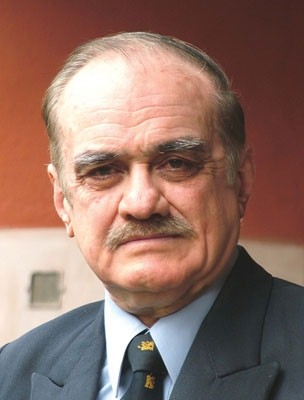
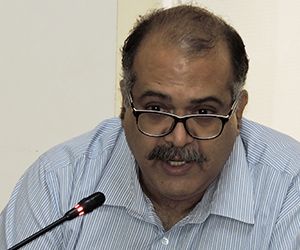


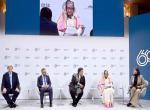
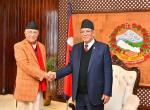
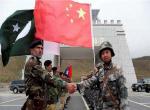

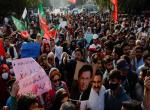
Post new comment